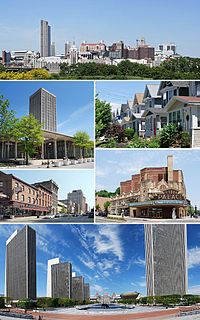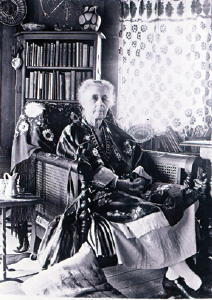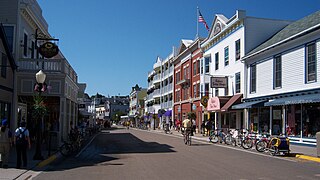
David Emanuel Twiggs, born in Georgia, was a career army officer, serving during the War of 1812, the Black Hawk War, and Mexican–American War.

Philip St. George Cooke was a career United States Army cavalry officer who served as a Union General in the American Civil War. He is noted for his authorship of an Army cavalry manual, and is sometimes called the "Father of the U.S. Cavalry." His service in the Civil War was significant, but was eclipsed in prominence by the contributions made by his famous son in law, J.E.B. Stuart, to the Confederate States Army.

Robert Allen was a career officer in the United States Army, serving as a brigadier general during the American Civil War.

Orlando Bolivar Willcox was an American soldier who served as a general in the Union Army during the American Civil War.
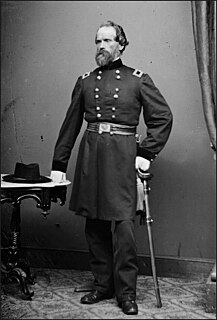
Robert Cowdin was a businessman, a field officer in the Union Army during the American Civil War and a local politician in Massachusetts. Cowdin was colonel of the 1st Massachusetts Infantry and served in several major battles early in the war. He was appointed brigadier general of volunteers September 26, 1862 and he then commanded a brigade in the defenses of Washington until March 1863. He did not become a full brigadier general because his appointment expired by law March 4, 1862 when the U.S. Senate adjourned without confirming it. His grade reverted to colonel but after being relieved of command of the brigade, he returned home and saw no further service.
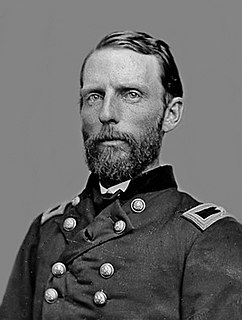
Cuvier Grover was a career officer in the United States Army and a general in the Union Army during the American Civil War.

William Henry Seward Jr. was an American banker and brigadier general in the Union Army during the American Civil War. He was the youngest son of William Henry Seward Sr., the United States Secretary of State under Abraham Lincoln and Andrew Johnson.

William Hays was a career officer in the United States Army, serving as a Union Army general during the American Civil War.

Louis Hébert was an American educator, civil engineer, writer and soldier who became a brigadier general in the Confederate States Army during the American Civil War.
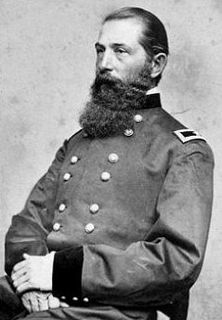
David Allen Russell was a career United States Army officer who served in the Mexican–American War and the American Civil War. He was killed in action as a brigadier general in the Union Army.

Johnson Kelly Duncan was one of the few generals in the Confederate States Army (CSA) during the American Civil War who was born and raised in the North. An antebellum officer in the U.S. Army, Duncan commanded the Confederate forts defending New Orleans during the Union Navy's successful attacks that led to the fall of the South's largest city.

Henry Warner Birge was a Union Army general during the American Civil War.

John Horace Forney was a major general in the Confederate States Army during the American Civil War.
George Varney (1834–1911) was a colonel in the Union Army during the American Civil War and was awarded the grade of brevet brigadier general, United States Volunteers, in 1867 for his gallant service at the Battle of Fredericksburg on December 13, 1862. Born in Levant, Maine, he was a wholesale grocer in Bangor, Maine when the war broke out in 1861.

Julius Adolph De Lagnel, was a Confederate States Army officer, who was appointed and confirmed as a brigadier general, during the American Civil War, but who declined the appointment. He was second in command to Brigadier General Josiah Gorgas in the Confederate Ordnance Bureau and at times was an inspector of arsenals. Before the war, he served in the United States Army from March 8, 1847 until May 17, 1861. After the war, he was engaged in Pacific steamship service.

Edward Higgins was a Confederate States Army brigadier general during the American Civil War. Before the war, he spent almost 20 years in the United States Navy and 7 years as a merchant steamship agent. After the war, he was an insurance and import sales agent at Norfolk, Virginia and from 1872 to 1875 was an agent for the Pacific Mail Steamship Company.
Grover Salman Wormer was a Union Army officer during the American Civil War.

Gershom Mott Williams was first Episcopalian bishop of Marquette. He was a church journalist, author, and translator. Williams graduated from Cornell University and received his Master's Degree and Doctor of Divinity from Hobart College. Although he passed the bar in 1879, Williams began an extensive career in the Episcopal clergy, having positions in Buffalo, Milwaukee, and Detroit before being made bishop. He was involved in many church commissions, include preparation and attendance at the Lambeth Conference of 1908.

Joseph Abel Haskin was a career army officer with service during the Mexican–American War and American Civil War.
David Henry Williams was a railroad surveyor, civil engineer and writer in civilian life. He was a volunteer in the United States Army during the Mexican–American War and a volunteer Union Army colonel during the American Civil War. He was appointed colonel of the 82nd Pennsylvania Infantry Regiment on July 23, 1861. He was appointed a brigadier general in the Union Army on November 29, 1862 but his appointment expired on March 4, 1863 without being confirmed by the United States Senate. His actual highest rank remained colonel. After the expiration of his appointment in 1863, Williams resigned from the Union Army and returned to his career as a civil engineer and, after his health soon declined, a writer for newspapers and magazines.




